Touring Car Racing – Overview
Touring car racing is an auto racing competition of advanced racing cars. This sport is very popular in many countries like Argentina, Australia, Brazil, Britain, Germany, Sweden and Norway. However, its speed cannot be compared with Formula One.
The touring car series consists of one or more endurance races with time duration of 3-24 hours. Basically, the event starts with a standard body shell but racing equipment like engines, suspension, brakes, wheels, and tires are permitted.
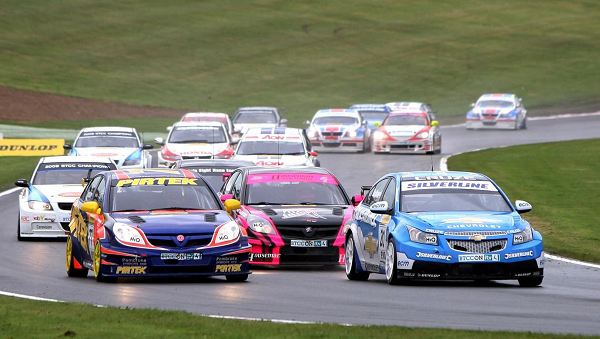
Races of touring cars are conducted on road courses and street circuits. There is a very little technical difference between racing cars and touring cars. A casual observer can never point out the difference between the two. Touring cars come from family cars like sedans, hatchbacks and do not support high technical level.
Just like any other racing game, all the riders participating in this game focus on covering the road track within the shortest time span and be the first one to win the game. The riders have to be quick and sharp as there can be a margin of less than one-tenth of a second between the first three finishers.
History
The British Touring Car (BTC) Championship, commonly known as touring car series, was founded in 1958 as British Saloon Car Championship and was renamed in 1987. This car racing series is conducted every year in the UK and is governed by the TCA.
The Touring Car Series Championship is following numerous national and international regulations like FIA Group 2, FIA Group 1, FIA Super Touring and FIA Super 2000. Earlier the championship was held by the merger of different classes on the basis of their engine capacity and racing simultaneously.
The BTC Championship adopted its own set of rules in 2001. In 2009, BTC launched the details and specifications of the Next Generation Touring Car to be introduced in 2011. These regulations were made to minimize the design, build, and running costs of the car engines.
Participating Countries
The Touring Car Championship is held in the UK every year. The drivers from different countries take part in this championship. Presently, there are five championships for every season. Following is the list of countries where World Touring Car Championship has been held.
First championship was held in 1987 at European Touring Car championship. The other places where the event was hosted are −
- Bathurst in Europe
- Calder Park Raceway in Australia
- Wellington in New Zealand
- Mount Fuji in Japan
The World Touring Car Cup was first hosted in between 1993 and 1995. The last World Championship was held in 2005. There were 25 drivers who took part in this FIA World Touring Car Championship. The manufacturers of these cars are BMW, Chevrolet, Citroen, Ford, Honda, Lada, SEAT and Volvo.
Touring Car Racing – Types
The Classic Touring Car Championship shelters numerous saloon cars racing on the tracks for years. The event is held with respect to the age of the cars that is how long the car has been in the game so that everyone can enjoy as well as participate in the game.
By the age of the cars, we mean classifying the cars in different sections like cars built before 1666, cars built up to 1983, cars built up to 1993, cars accommodating VW’s and built before 2003, cars built before 2005 and the most important big muscle car that is the Classic Thunder along with series for any Blue Oval cars.
Types of Cars
Presently, the racing cars are a combination of 2.0L sedans like the BMW 320si, E90 and hatchback cars like the Honda Civic and Ford Focus. These models from numerous manufacturers follow the Next Generation Touring Car (NGTC) regulations. In 2010, two new work teams Chevrolet by RML and Honda by Team Dynamics were added.
Building a Touring Car
While building a racing car, the basic thought is to connect the racer in the car with the trackside fans. These cars are normal cars used in everyday life with further modification. The car machines are a result of thousands of man-hours and detailed reworking, which is connected with the highest levels of the sport.
The first task after buying a road car is to convert the car into a bare body shell followed by acid dripping. This is necessary to remove the paint and make better surface for wielding things. All the sealant from other parts of the shell along with components put into the sound proof of the car are removed.
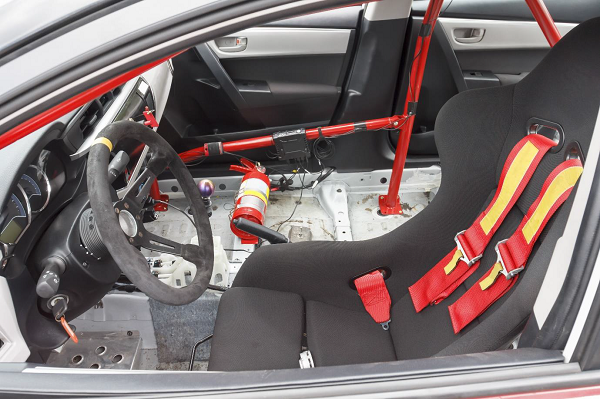
In simple words, the car becomes bare metal. After this, it is returned back to the team where it is further filtered prior to designing the race machine. Also the basic characteristics of the cars need to be removed. The fixtures for the seat belt like the roof lining are removed.
These things are coupled back and it scores a point by lightening the car followed by precision work. In the world of racing, the millimetres count and have to be double checked. The car is put on a jig with specific measurements required for the suspension pick-up points with similar things for repeatability.
All the racing cars should be exact copies of other cars. Managing racing cars require a different level of precision. Finally, when the crew members are completely satisfied that all the cars design share the same dimensions, then the race-bred parts can be shaped.
Some controlled parts are mandatory for all the racing cars. The front and rear sub-frames are installed, the body shell is stripped to bulkhead and is put in front sub-frame. A single wrong measurement can affect the complete machine and everything has to be redesigned again.
An aerodynamic splitter is connected to the front of the car where it fits on to the sub-frame and commands the height of the suspension pick-up points. It can’t be too low as it would fail the mandatory ride-height tests conducted after each of the on-track sessions.
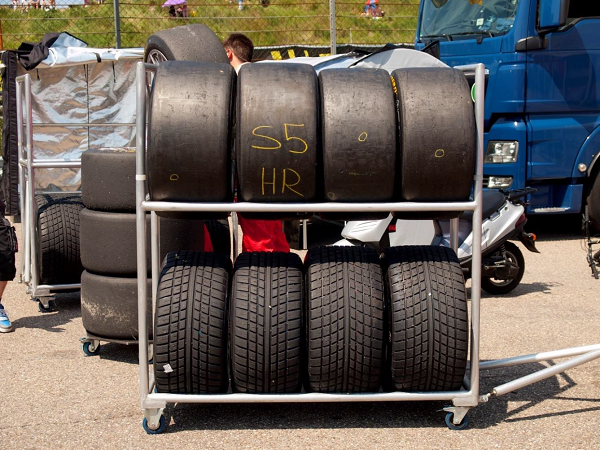
After the suspension process, the base of the fuel tank is welded into the car along with installing the roll cage followed by welding the shell of the car. The nascent race machine now begins to take shape. Further, the engines are installed and the suspension is combined with the wishbones and the dampers.
While bolting the suspension, the internals of the cockpit like the racing seat and six-point harness, with addition to the highly complex electronic dashboard is installed. The intercooler used has a common core. Logically, the car is now completed. Finally, controlled AP brakes and the outside part of the car is stickered.
Touring Car Racing – Equipment
While preparing for the first race, the basic tools required is the race kit. It consists of a helmet, gloves, firearm suit and racing boots.
Helmet − It was precisely designed for automobile racing. It is round in shape, made of carbon fibre, Kevlar, or fiberglass shell, which is aligned with energy-sucking foam and Nomex padding.
Head Sock − It is also referred to as balaclava. It is made of Nomex and worn before wearing the helmet.
Gloves − They are made of Nomex and leather to protect the rider’s hand and ensure proper grip.

Firearm Suit − It is a one-piece uniform, which is fire resistant. It should have the ability to ensure exposure to direct flame and heat before the driver suffers from second degree burns.
Driving Shoes − It should have a layer of leather or suede from the outside and a layer of Nomex from the inside. Drivers should also wear fireproof socks.
Touring Car Racing – How to Start?
Driving a racing car is very different from driving a normal car. While driving a car in the Touring Racing Car Championship, one needs to take care of the following −
- When driving a racing car, the rider should acknowledge factors like the weight of the car, car’s grip, stopping power, power and torque of the engine, steering of the car, and car’s suspension.
- Car’s grip is an important factor. It determines how much force is required to make the tires slip on a certain terrain. In any condition, the racer should not lose control of the car.
- Acknowledging the grip of the car is very handy. It shows how fast the car can go while taking a turn with certain radius.
- Always take care of the corners of the car’s suspension. If it is very tight, the car won’t sway and it makes the car more predictable. If it is loose, the tyres stay on the ground.
- Understanding the car’s suspension helps the driver to acclimate the car better. Some people freak out when they feel the car is swaying because of lateral forces being exerted on it. It is very normal and occurs due to the center of gravity shifting slightly.
- Swaying is a sign of danger when the car is sliding as the car generally sways equal amount when driving slowly to slide or when careening off the track sideways.
- Understanding how fast the car responds to the turning wheel is important. The driver should understand how to take a sharp turn and how much to turn the wheel.
- If the driver turns the wheel too little it makes the car to under steer and throws it off the track. If turned too much, the car is over steered and either the car slides or the car hits the inside of the corner.
- The next important thing is to have stopping power. While planning for serious racing, the drivers have to mostly slam on the brakes to slow down for corners. Instead of coasting down the speed, slamming on the brakes helps in maintaining a faster speed for longer duration.
- One thing to keep in mind is, that waiting too long to brake can lead to braking too hard, as a result, the car slides. Applying brake while turning, adds another sway factor and decreases the grip and the car slides.
- Finally, the driver should keep in mind the power and torque of the engine. This gives the driver a better idea of how to drive the racing car. The driver should be capable of accelerating as fast as possible. The power of the car is determined by the engine powers and grips of the car.
Tips to Improve Driving
- It’s better to imagine a string tied from the steering wheel to the gas pedal. The logic behind this is, one can drive faster when the wheels are straight. If the wheels are cranked distantly in a direction, then the strings will be tight on the gas pedal and can’t push it much.
- Remember to brake hard and early as driving on a racing track is different from normal driving. So when the rider reaches a turning point, the rider has to hit the brakes hard with full force and slowly let go off the brake while taking the turn.
- At any cost, never let go off the steering even if the arms get all twisted. It’s better never to let go off the steering wheel. Hands should always stay on the sides of the steering wheel.
- All the corners are not important. The key for driving fast is to acknowledge how to exit a corner to get the wheel straight and start gaining speed.
- Keep your eyes up. The drivers who are not willing to drive by the instruments alone wisely make use of the big window above the dashboard. The secret is to look through the top 1/3 of the windshield.
- It’s ok to feel weird at first, as it is very different from normal driving. The driver should learn more about the car and tires. On the racing track, everything starting from the speed, noise, inertia, the body roll to the pitch and yaw axes gets amplified.
These are few basic guidelines that the racer should always keep in mind. Racing is something which requires practical demonstration and practice. Theoretical knowledge is not enough to participate in championship.
Rules of Touring Cars
Following is a set of general prescription for Touring cars also known as Group A Cars issued by the Federation Internationale Automobile (FIA). Any type of modification is not allowed unless authorized by the regulations specified by FIA.
- Cars homologated after 01.01.99 with the exception of kit variants and competing in rallies must not be wider than 1800 mm.
- No part of the car must touch the ground when all the tires on one side are deflated.
- Cars must be fitted with a reverse gearbox in working order.
- Suspension parts and wheels made from partially or entirely composite materials are prohibited.
- Drivers should not exceed 40mph while driving in the pit lane. Drivers exceeding this can be penalized or they may lose their qualifying times.
- Testing is unrestricted seven days before the start of the first championship meeting.
Touring Car Racing – Champions
The Classic Touring Car Championship was grounded to facilitate a shelter for the various saloon cars racing over a number of years. The FIA World Touring Car Championship was authorized by the FIA. The last championship was in 2005. Following are a list of championships.
- World Touring Car Championship
- European Touring Car Championship
- British Touring Car Championship
- CNC Heads Saloon Championship
Champions
Touring car racing is an adventurous sport where the riders use cars of different brands in order of win races and series. Following are some of the Touring Car racing champions.
Gordon Shedden
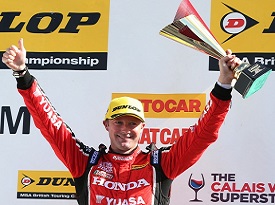
Gordon Shedden is an auto racer from Britain who belongs to Honda Yuasa Racing Team. In 1999, Shedden won the Ford Fiesta Championship, which was followed by nine more wins in various competitions. He took part in SEAT Cupra Championship in 2003 and 2004 but could not succeed. He was a runner-up in 2003 and ranked fourth in 2004.
In 2006, Team Halfords chose him to take part in BTC Championship where he won five times. In 2007, he joined the team of Honda Civic and earned four wins in BTC Championship series. In 2008 and 2009, he could not succeed much. In 2010, he won two races at Croft Circuit and finished third in Drivers Championships.
Colin Turkington
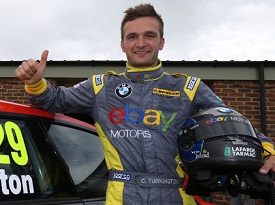
Colin Turkington is an Irish auto racer who is currently a member of Team BMR and is competing in BTC Championship. He won BTC Championship for Team RAC in 2009 and for Team eBay Motors in 2014. Turkington started his career in 1993. He won his first title in 1998 in Northern Irish Metro Championship.
His next Championship was Ford Credit Fiesta Zedec in 1999 and he won this title in 2001. In 2002, he moved to BTC Championship where he joined Team Atomic Kitten and ranked 14th. In the season 2003-2004, he took part in West Surrey racing and won his first race. In 2006, he ranked third in Drivers Championships. Till 2015, he won many championships.
Andrew Jordan
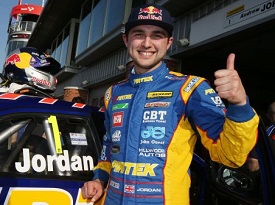
Andrew Jordan is a British auto racer who won BTC Championship in 2013. In 2003, he joined Ford Rally Academy and won Winter Junior Rallycross Championship. The following year also he won BTRDA Junior Rallycross Championship. The year 2005 was his year as he won four different titles. In 2006, he won British Rallycross Supercar class.
In 2009, he joined his father’s team and his success included two podiums. In 2009, he joined Vauxhall Team and got first pole position. In the seasons that followed, he took part in many races and won. In 2014, he again took part in Rallycross and finished third. In 2016, he announced that he would join Motobase for 2016 season.
Matt Neal
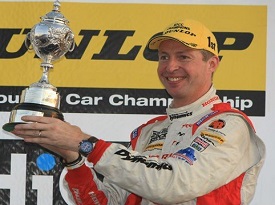
Matt Neal or Matthew Neal is a British auto racer who won BTC Championship three times. Neal started his career in 1988 and drove Ford Fiesta. He was British Group N Champion in 1990 and 1991. Neal debuted into BTC Championship through Pyramid Motosport and finished 13th. In 1992, he joined Team Dynamics and won the Total Cup in 1993. In 1995, he again joined the Team Dynamics and won different titles in 1995, 1999, and 2000.
In 2001, he took part in European Touring Car Championship and finished 14th. In 2002, he again came to BTC Championship and ranked third. In the season 2004 to 2007, he rejoined Team Dynamics and took part in Drivers Championship and Independents Championship. He also took part in many other championships but could not succeed much.
Jason Plato
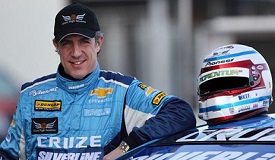
Jason Plato is a British racer who has won BTC Championship two times. He also has the record of most wins in BTC Championship. In his career, he took part in Formula Three and Formula Renault and after that he participated in Renault Spider Championship in 1996 and won the title.
In 2000, he joined Vauxhall and ranked fifth. In 2001, he won the BTC Championship being in the Vauxhall team. In the season 2002-2003, he took part in NASCAR racing and finished third. He returned to BTC Championship in 2004 and took part in many races.
Fabrizio Giovanardi
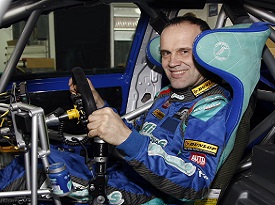
Fabrizio Giovanardi is an Italian racer who has won eight Touring Car titles. In 1986, he won the Italian and World Formula C Karting titles. In 1987, he took part in Italian Formula 3 Championship and scored a podium. He won two races in the championship and got third rank in the overall championship.
In 1989, he participated in International Formula 3000 and won the first race but in overall championship, he ranked 10th. In 1991, he took part in Italian Superturismo Championship and got five Class S2 victories. He also has taken part in European, World, and British Touring Car Championships and won many races.
James Thompson
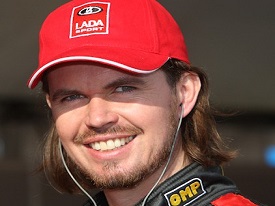
James Thompson is a British auto racer who has won BTC Championship two times. He started his career in 1994 through Peugeot 405. In 1995, he was a member of Vauxhall team and was the youngest winner. In 1996, he won a race with Vauxhall Vectra.
From 1997 onwards, he took part in various races but could not succeed. In 2001, he joined Team Egg Sport and got four victories. In 2002 and 2004, he was BTC Championship champion. He took part in SEAT Sport UK with Jason Plato. In 2007, he took part in World Touring Car Championship (WTCC) and earned the third place.
Yvan Muller
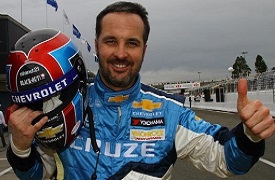
Yvan Muller is an auto racer from France who won World Touring Cars Championships four times. In 1992, he won Formula Two Championship. In 1995, Muller won French Supertouring Championship. He debuted in BTC Championship in the year 1998 and became the top driver in 2000, where he raced for Vauxhall.
In 2001, Muller again took part in BTC Championship and finished second. In the following year, he again finished second in the same series. In 2006, he switched to WTCC and finished at the second place. In 2007, he got the second position. In 2010 and 2011, he won the World Touring Car Championship.
Alain Menu
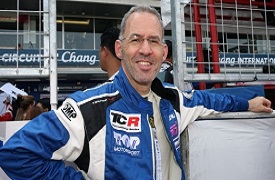
Alain Menu is a Swiss Racer who has won BTC Championship two times. He finished second in WTCC when he drove for Chevrolet between 2005 and 2012. Menu started his career as a single racer and reached International Formula 3000 Championship in 1991. In 1993, he associated with Renault and took part in BTC Championship.
In this championship, he finished at the second position. In 1994, he again took part in BTC Championship with Renault Laguna but could not get much success. However, he got pole position and third rank in the race. In 1997, Menu won four races. In 1998, he won three races with the same Renault car. Later on, he took part in many other races of BTC Championship. Now Menu is a coach for BMR Team.
Laurent Aïello
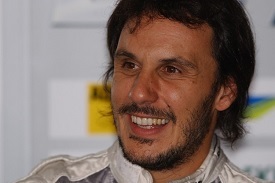
Laurent Aïello is a French auto racer who won 24 Hours of Le Mans in 1998, BTC Championship in 1999, and Deutsche Tourenwagen Masters series in 2002. He started his career in 1988 and ended in 2005.
He also took part in International Formula 3000, French Supertouring Championship, The Italian Super Touring Championship, and Super Tourenwagen Cup.
In 1994, he won CFS title and in 1997, he won STW title. At the starting of his career, he took part in French Karting Championship.
